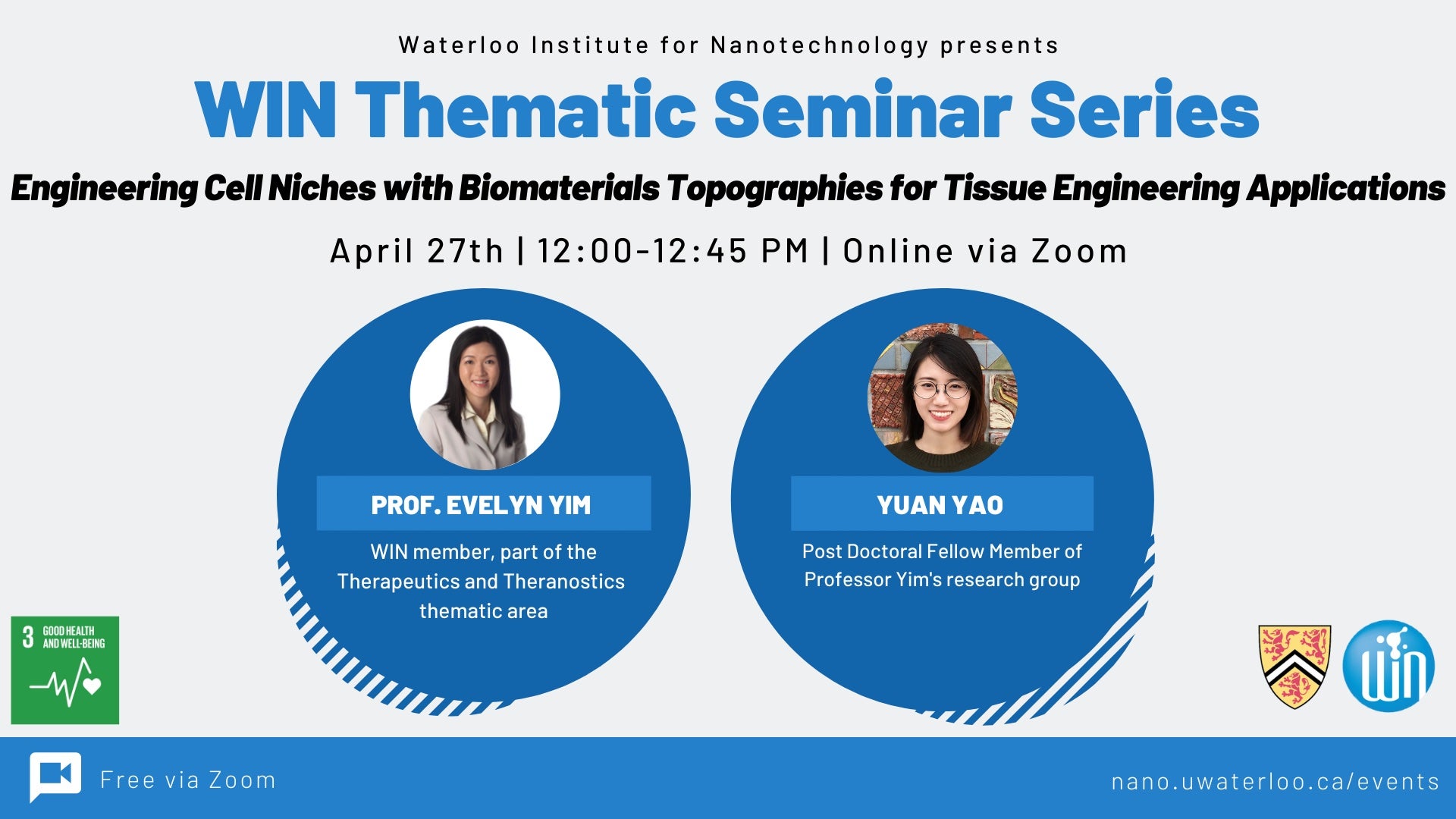
Engineering cell niches with biomaterials topographies for tissue engineering applications
Cells interact with biochemical signals and biophysical signals, such as rigidity and topography, in their extracellular matrix microenvironment. An ideal scaffold for tissue engineering application should mimic the microenvironment and present the appropriate biochemical and biophysical cues such as topographies to regulate cellular responses. Our research group is interested in studying the interfacial interactions of cells with the extracellular substrate and how to apply this knowledge to stem cell differentiation and tissue engineering applications. In this presentation, strategies on engineering cell-materials interface, such as incorporating topographies on biomaterials for different application for vascular and corneal repair will be discussed.
As example is vascular tissue-engineering application, luminal topographical pattern has been applied to tubular scaffold to enhance endothelialisation. Small diameter vascular grafts (< 6 mm internal diameter) are used in bypass or replacement of occluded peripheral arteries. However, there is a lack of commercially available, synthetic small diameter grafts that provides acceptable long-term patency. To improve clinical outcomes, it is necessary to enhance in situ endothelialization of small diameter vascular grafts.
Topographical cues may be used to affect the change by influencing the behavior of endothelial cells, such as increasing their migration and proliferation capacities. Our group has fabricated tubular scaffold of poly(vinyl alcohol) (PVA), which is a biocompatible and non-thrombogenic hydrogel, as a potential off-the-shelf small-diameter vascular graft. Incorporation of luminal topographical pattern and biochemical surface modification have been shown to enhance endothelial cell adhesion while the hemocompatibility was not compromised.